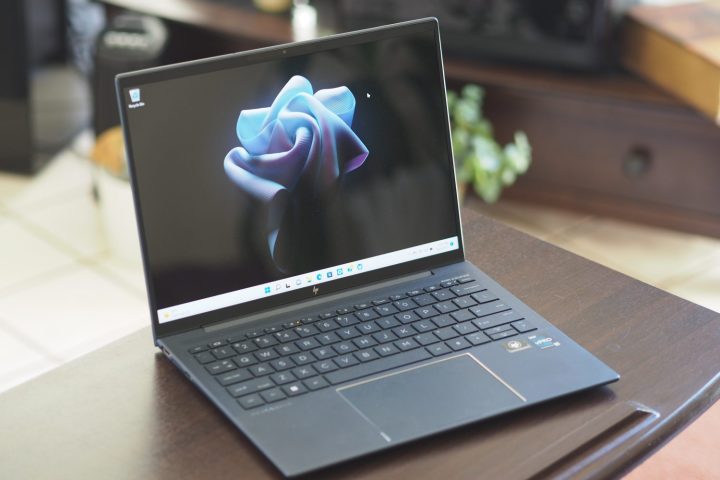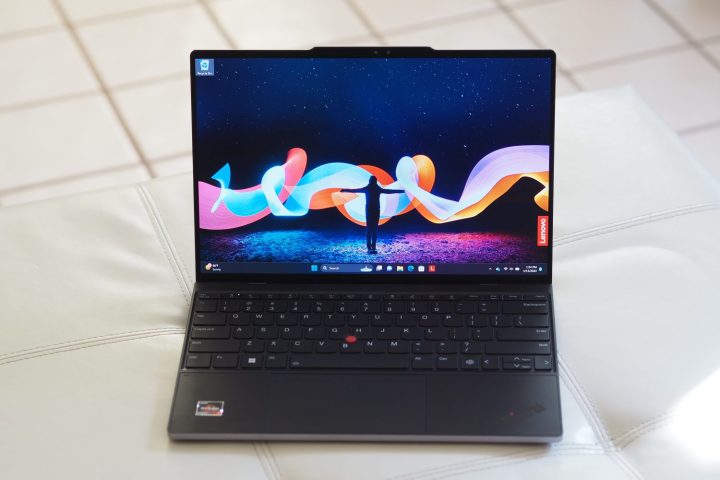
Apple’s MacBook Air M2 is one of the best laptops. It’s been holding down the fort in the 13-inch laptop class that’s slowly being superseded by 14-inch machines. It’s incredibly thin while still providing solid performance, superior battery life, and an excellent visual and audio experience. It’s a hard laptop to beat if you’re OK with macOS.
But Windows remains the dominant platform, so anyone needing a Windows laptop has some excellent alternatives. You’ll spend around the same price, and you’ll get excellent performance, decent battery life, and in some cases, even superior displays. Here are six laptops that you should buy instead of the MacBook Air.
Dell XPS 13 Plus

Dell’s XPS lineup has undergone some sweeping changes in the latest generation. Several standout features, including a hidden haptic touchpad, a zero-lattice keyboard, and LED function buttons, all started with the XPS 13 Plus and made their way to new 14- and 16-inch models. It’s a small enough laptop thanks to the smallest display bezels in the business, but it’s a bit thicker than the insanely thin MacBook Air at 0.60 inches versus 0.44 inches while weighing around the same 2.7 pounds.
Those are some controversial features, but that doesn’t mean they’re bad. The keyboard has large keycaps with light, precise switches, and it doesn’t take long to get used to the lack of key spacing. It’s an edge-to-edge design that looks great as well, although the MacBook Air’s Magic Keyboard is still the best on a laptop today. The haptic touchpad works well, especially after several firmware updates, and its hidden nature is also easy enough to overlook given how futuristic the seamless glass palm rest appears. The LED function buttons are the least functional, especially given the lack of haptic feedback that would make them easier to use.
Outside of its ultramodern appearance, the XPS 13 Plus is a strong performer with an excellent OLED display option. Its battery life is slightly less than average, but its price is attractive, starting at $1,099 for a 13th-gen Core i7-1360P, 16GB of RAM, a 512GB SSD, and a Full HD+ (1920 x 1200) IPS display.
The MacBook Air costs $1,099 for an 8-core CPU, 8-core GPU M2 chipset, 8GB of RAM, and a 256GB SSD, making the Dell a bargain based on RAM and storage. For $200 more, you can upgrade the XPS 13 Plus to a UHD+ (3840 x 2160) OLED panel that’s much better than the MacBook Air’s 2560 x 1664 Liquid Retina IPS display.
You might be wondering why we didn’t mention the new XPS 13, which was announced earlier this year. It’s not yet available and, aside from the new Core Ultra chip, is nearly identical to the current XPS 13 Plus.
Asus Zenbook S 13 OLED

Asus has a history of producing cutting-edge thin-and-light laptops at attractive prices. The Zenbook S 13 OLED is a classic example. It boasts an attractive aesthetic, with a geometric pattern on the lid and a form-over-function design that features an aggressive keyboard angle when the lid is opened. This boosts airflow and provides a more comfortable angle for typing.
For $1,299, you get a 14th-gen, 28-watt Intel Core Ultra 7 155H chipset that boasts additional Low Power cores for increased efficiency and a Neural Processing Unit (NPU) to handle AI tasks on-device. It even includes a Windows Copilot button supporting Microsoft’s AI implementation, albeit via the cloud (for now). This configuration includes 32GB of RAM (more than the MacBook Air’s $400 24GB upgrade), a 1TB SSD, and a 13.3-inch 2.8K (2880 x 1800) OLED display.
The Zenbook S 13 OLED’s 0.43 inches is slightly narrower at the front than the MacBook Air’s 0.44 inches and just slightly thicker at the rear at 0.46 inches. It’s also just 2.2 pounds, lighter than the MacBook Air’s 2.7 pounds. And yet, it’s even more solidly built with a lid that resists all bending and flexing. The chassis is made from a strong aluminum-magnesium alloy, while the lid uses a “plasma ceramic aluminum” material that feels like clay, but looks like stone. Overall, the Zenbook has a great design to go with speedy performance and a beautiful display.
ThinkPad X1 Nano Gen 3

On the other end of the spectrum is the ThinkPad X1 Nano Gen 3, the diminutive laptop for ThinkPad traditionalists. It retains all the standard ThinkPad design features, including the black-on-black aesthetic with a black carbon fiber lid and a magnesium-aluminum alloy in the chassis bottom. The keyboard is identical to the ThinkPad Z13 Gen 2’s, while the touchpad remains a mechanical version that still works well.
Most notably, the ThinkPad X1 Nano Gen is thin at 0.58 inches but, more importantly, remarkably light at 2.12 pounds. That makes it one of the lightest 13-inch laptops you can buy. And it still packs in 13th-gen Intel CPUs including vPro options that can plug into to enterprise security and management systems. The optional 4G WWAN support is another nod to business users.
Just because the ThinkPad X1 Nano Gen 3 is a business laptop, that doesn’t mean it’s expensive. It costs $1,181 for a Core i5-1340P, 16GB of RAM, a 512GB SSD, and a 2K (2160 x 1350) IPS display. For $1,539, you can upgrade to a Core i7-1370P vPro, 16GB of RAM, a 1TB SSD, and a touch display.
HP Dragonfly G4

HP’s Dragonfly G4 is the one laptop on this list that’s squarely aimed at businesses. We reviewed the previous-generation Elite Dragonfly G3 and the newer generation offers updates to 13th-gen CPUs. The Dragonfly G4 features an elegant aesthetic, a thin and light chassis at 0.64 inches and 2.2 pounds, and an excellent keyboard just one notch below the MacBook Air’s. It doesn’t offer a haptic touchpad like Apple’s excellent Force Touch version, but its mechanical version is comfortable enough.
But where the Dragonfly G4 excels is in offering the features that businesses want the most. First, it might still be on the previous generation of chipsets, but there’s an Intel vPro option that offers the best compatibility with enterprise management and security systems. In addition, the Dragonfly supports the near-field communications (NFC) and WWAN cellular connectivity that businesses demand. HP offers a host of additional security features such as its Secure Erase BIOS, Sure Admin, and others that can meet business security concerns.
If you’re a business user, the Dragonfly G4 is an attractive laptop that requires no compromises. That’s something that the consumer-focused MacBook Air can’t match. The HP is more expensive, even though it’s currently on sale for a massive $1,274 or more off of the list price. The Dragonfly G4 costs $1,274 for a Core i5-1335U, 16GB of RAM, a 256GB SSD, and a 13.5-inch FHD+ IPS display. If you dial in all the available options from the very long list, you’ll spend $2,331 (again, half-price) for a Core i7-1365U vPro, 32GB of RAM, a 2TB SSD, and a 13.5-inch FHD+ privacy screen. That compares to the highest-end MacBook Air configuration, which costs $2,399 for an 8-core CPU/10-core GPU M2, 24GB of RAM, and a 2TB SSD.
Surface Laptop 5

Microsoft’s answer to the MacBook Air is the Surface Laptop. In its fifth generation, the Surface Laptop 5 sports a gorgeous thin-and-light chassis that’s just 0.58 inches thick and weighs 2.8 pounds. It’s not as thin as the MacBook Air, but it’s just as well-constructed. Microsoft also offers a mix of striking colors, including a Platinum option with Alcantara fabric covering the palm rest.
The Surface Laptop 5 still runs with 12th-gen Intel CPUs, but it’s a solid performer with good battery life. It enjoys an excellent keyboard that’s precise and comfortable, along with a mechanical touchpad that’s very good for the type. Surface displays are always excellent, and the Surface Laptop 5 continues the trend with a 13.5-inch 2256 x 1504 IPS touch- and pen-enabled display in the productivity-friendly 3:2 aspect ratio.
You can buy a Surface Laptop 5 for less than a MacBook Air, with a starting price of $1,000 for a Core i5, 8GB of RAM, and a 256GB SSD. That includes the comfortable Alcantara fabric. The most you’ll spend is $1,700 for a Core i7, 16GB of RAM, and a 512GB SSD, which is considerably less than the equivalent MacBook Pro.
ThinkPad Z13 Gen 2

Lenovo’s ThinkPad line has long been one of the most iconic brands, with a distinct look and feel that’s recognizable from a distance. But Lenovo has been modernizing the aesthetic and overall design, epitomized by the ThinkPad Z13 Gen 2. This laptop steps away from the black-on-black color scheme and introduces a new all-aluminum chassis and an optional Flax Fiber Bronze color sporting a lid cover made from sustainable woven flax fibers.
The ThinkPad Z13 Gen 2 is more familiar inside, with a black keyboard with the line’s typical sculpted keycaps and tons of spacing. Its switches are light and snappy, making it one of the better keyboards outside of a MacBook. The haptic touchpad is excellent, with responsive haptics and virtual button support for the TrackPoint nubbin that doesn’t take away from the swipeable surface area. The ThinkPad Z13 Gen 2 is very thin at 0.55 inches and weighs about the same as the MacBook Air at 2.78 pounds.
Inside, you’ll find fast AMD Ryzen CPUs that might be a generation behind, but still provide speedy performance and good battery life. Its starts at $1,241 for an AMD Ryzen 5 Pro 7540U processor with 16GB of RAM, a 256GB SSD, and a 13.3-inch FHD+ IPS display. You can upgrade that to an excellent OLED display for just $179 more, while storage can be upgraded to 2TB and 4G WWAN support is also available. Even upgraded to 64GB of RAM and a 2TB SSD, the ThinkPad Z13 Gen is price-competitive with the high-end MacBook Air at $2,064.


